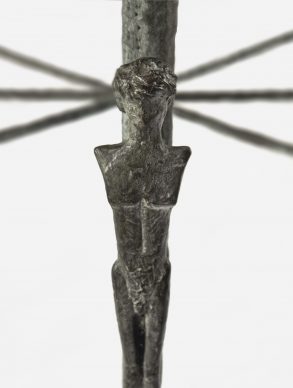In previous years, it was Cezanne and Van Gogh who scaled the dizzy heights of the market. Nowadays it’s Basquiat stealing the headlines. Last week a canvas of his sold for $57.2 million, the highest lot of the season.
This state of play was confirmed in New York between 8th and 12th May.
In the same week, a selection of what is considered the best work from the past two months across the two s fields went under the hammer. At Sotheby’s and Christie’s combined, modern art brought in $363 million while contemporary art took in $826.3 million, more than double that figure. Even in the evening modern auction (featuring the works with the highest value) the final sell-through rate at Sotheby’s was 68%, the lowest of the season.
For the Franco-Swiss private dealer Thomas Seydoux, the former co-director of the Impressionist and Modern Art department at Christie’s “the majority of lots weren’t that appealing. Sotheby’s is suffering at the moment from a shortage of experts not only in terms of finding interesting pieces but also in terms of promoting those paintings. Moreover the demand in the contemporary art domain is stronger at all price brackets. Saying that, if an exceptional collection came onto the market it would receive an excellent welcome.”
In the absence of the aforesaid collection, Sotheby’s has announced that on 21 June in London it will offer what is unanimously considered a masterpiece of cubism, ‘Femme Assise’ by Picasso. Painted in 1909 the canvas is expected to fetch in excess of £30 million and should reignite media interest in the field.
Meanwhile, Marc Blondeau the private dealer from Geneva, known for among other things initiating the collector François Pinault into art, also affirms the overall mediocrity of the modern art lots.
“Out of the 52 lots offered in the evening sale at Christie’s only 20 of them would have merited inclusion in these prestige auctions 10 years ago.
The other lots would have been relegated to the daytime auctions. More generally, the modern and contemporary markets are on a readjustment cycle. Three years from now there will have been a huge clean-out. The prices in current art are moving too fast, too high. Certain artists like Urs Fischer (born in 1973) have seen their value increase by a factor of ten in the space of a few years. Others like Jean-Michel Basquiat represent high financial interests for investors. The investment funds are not going to support artists like Damien Hirst forever. It is not normal either that the value of a painting by say Christopher Wool reaches the same levels as a major historical figure like Jackson Pollock.”
From his brand new gallery on Madison Avenue in New York, the dealer Emmanuel Di Donna (he has doubled his space), a former of Sotheby’s employee, promotes art from the ’20s to the ’70s. In his opinion, “People have not changed their tastes. It’s simply that when it comes to contemporary art, the public is less picky than it is with modern art. The clients looking for early 20th century art are looking for exceptional pieces. That’s why in my dealings I focus on works above 1 million dollars.”
In fact it is partly down to the sales’ structure that the modern art auctions have suffered from a negative perception, especially the allocation of artists between modern and contemporary. Take for instance Alexander Calder, born in 1898, whose works were included in the contemporary auctions. According to the databank Artprice, between 10 and 12 May no fewer than 30 sculptures by the American known for his ‘Mobiles’ were offered for sale and went for as much as $5.7 million.
According to Thomas Seydoux “it’s time to reform the auctions. Why are artists like Rothko for example (1903-1970) or de Kooning (1904-1997) being included in the contemporary auctions?”
Lastly, for Seydoux the weak auction results directly benefits private dealers:
“We’re directly reaping the benefits of the unpredictable aspect of the results at auction nowadays. Taking into account the mediocre quality of the works, we could have seen a situation where only 30% of the lots found buyers this season.”
That kind of result would have been catastrophic for the global art market.
Donating=Supporting

Support independent news on art.
Your contribution : Make a monthly commitment to support JB Reports or a one off contribution as and when you feel like it. Choose the option that suits you best.
Need to cancel a recurring donation? Please go here.
The donation is considered to be a subscription for a fee set by the donor and for a duration also set by the donor.





